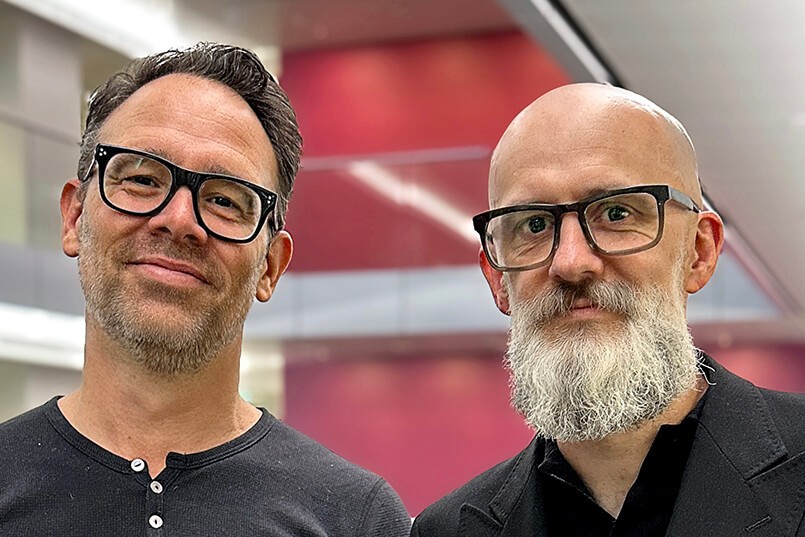In 2015, retired US Army General, Stanley McChrystal published a book about the operational challenges he faced when, in 2003, he took command of the Joint Special Operations Task Force in Iraq.
Called Team of Teams. New rules of engagement for a complex world, McChrystal draws on the US Army’s challenge of fighting terrorist groups in the Middle East. In it, he reflects on the traditional structures of the US Armed Forces and how the ingrained characteristics of these structures were causing it to fail when it was faced with unfamiliar enemy behaviour.
It’s a fascinating book for many reasons and you can read Darren Woolley’s review of it here for more detail.
From my perspective, one of the most interesting points woven throughout the book was what McChrystal saw as the biggest issue the US Army was facing back in 2004. According to him, the US Army did not have ‘an efficiency problem’ when it came to be fighting the emerging terrorist cells; what they had was ‘an adaptability problem’.
This resonated with me on a few levels, primarily because it mirrors what we at TrinityP3 have discussed as a key inhibitor for many marketing teams and their ability to successfully navigate the changes currently happening across the industry.
We need to stop focussing on efficiency alone.
At TrinityP3 we hear a lot about efficiency. Without doubt, efficiency is the most common inclusion in any brief TrinityP3 take from a C-Suite looking to undertake a strategic alignment across their marketing function.
And whilst we will often assess multiple efficiency measures across duplication, procedures and technology, the ultimate measure of efficiency success comes down to the dollar savings.
The CEO’s, CMO’s and CFO’s we deal with are looking to grow their marketing return through resources streamlining (internally and externally) and deliver a more favourable bottom line back to the company via savings gained through (cost) efficiency. And this is where I see the issue facing marketing teams today.
You see, as McChrystal succinctly points out, “you can only optimise for efficiency if you can identify x and y sufficiently far in advance to build a system for converting one into the other; the pursuit of efficiency is grounded in prediction.”
Therefore, if you know what needs to be done, and how, far enough in advance, then measure yourself by efficiency. However, in this environment of test, iterate, test and disruption it is becoming harder and harder to put all your success factors into the efficiency basket alone.
Just as the US Army realised in 2003, to succeed in today’s market, the marketing department needs to be effective, adaptable, innovative and resilient. And it may come at a surprise that it is difficult to achieve this whilst focussing solely on doing things quicker for less money. So, what’s holding us back?
The current team structure is broken
Most would agree that greater efficiency within the existing model usually refers to working harder or longer. Sometimes, it will involve adding more resources to get the job done. Neither of these solutions are efficient.
This is because the term efficiency has morphed to become intrinsically linked to cost-savings and not necessarily about working together more effectively to drive innovation, growth or productivity.
What’s really needed is a change in thinking around how marketing structures itself across and within teams and how these teams focus on agility, adaptability and resilience to meet the challenges it faces. In this current landscape of disruption and speed, the ability to be adaptable and resilient as a team is much more important than being efficient.
We talk to a lot of CMO’s about efficiencies. The driver for this we know is coming from the need for marketing to prove its worth whilst delivering savings. However, when focus is solely on looking at ways to reduce inputs (money/people) to deliver the same (or more) outputs, we fail to look at how to use the inputs we have in a more effective or innovative manner to deliver something better.
As management guru Peter Drucker once stated,’ being efficient is doing the thing right, being effective is doing the right thing.’ So, how can marketing teams become more effective (and still be relatively efficient)?
Well, McChrystal outlines this by demonstrating how an organisation steeped in deep traditions changed the way it worked with itself to deliver better outcomes. Unlike marketing, they were dealing with life and death decisions, however, what he touches on is undeniably relevant and applicable to the still relatively new rules of marketing and its landscape.
Tear down those walls
In Team of Teams, McChrystal identifies the impact team (or squad) delineation has on how people work together. He states quite succinctly that the bonds within teams are fundamentally different to those that are between team, and the team is ‘The point at which everyone else sucks’.
I love this description, but what does this mean? Well essentially, we work best within our own teams first and disregard the needs of anyone who works outside it. We see this a lot when we work with marketing teams within large organisations.
Functioning in a traditional hierarchy with siloed departments and teams within departments, cross collaboration and consideration of others is low. Because of this we believe the hierarchical, command and control, siloed structure is the anathema of efficiency.
The premise of management as thinkers and subordinates as doers, with everyone knowing their place, is still common place business thinking, however, it is antiquated and ill-fitting to the new and ever evolving business landscape we find ourselves in.
This in particularly so for marketing which now exists in a more complex landscape that is increasingly inter-dependent across multiple functions of business. Traditional hierarchies do not allow for smooth transitions between or within teams across process, resources, skills and capabilities and knowledge sharing.
And it is this impingement that is driving inefficiencies by stopping marketing from achieving the flexibility and adaptability it needs in today’s environment.
What’s needed is a shift in focus toward creating stronger inter-dependencies, building networked teams, reducing duplication and looking at developing skills and capabilities around solving customer problems first. Achieve this, and efficiencies will follow.
Stop the turf wars
The biggest outcome from the new way of thinking employed by the US Army was tackling the inter-team turf wars, thereby reducing the point at which everyone else sucked.
Amongst other things, what this achieved was a focus on building flexibility across teams and sharing skills sets, a shared sense of purpose and reducing internal conflict which was hampering the army’s efficiency, effectiveness and resilience.
Within an organisation, conflict comes in many forms and across many levels, the impact this has on the capacity for people to do their jobs effectively is huge. Research undertaken by Lindred Greer at Stanford University confirms this.
She identified companies with strict hierarchies as being more likely to suffer from conflict and deliver lower performance than flatter structures. Furthermore, those with flatter structures were better at coming together to deal with competition.
At TrinityP3, we see conflict within and across teams every single time we step foot into an organisation, and I mean every time. Often, it is being ignored by management (who act shocked when we bring it to the table) or dismissed as something that can be worked out amongst themselves (it can’t).
However, from our experience, the impact of these internal conflicts is detrimental across every aspect of the marketing chain, from agency relationships, supplier duplication, key learnings, insights, resource allocation and most importantly, effectiveness of output.
Inter-dependencies across business functions is the new normal, and I have previously touched on the changing role of marketing in my strategy/structure post and how it must permeate across all other functions of an organisation to be able to deliver customer benefit.
And, as Team of Teams demonstrates this approach to cross collaborative teams that function together results in more united, resilient, flexible and focused teams delivering on shared business goals.
The pigeon-holed resource
At some time or another in our career we have all felt as though we have been pigeon-holed. And, under the traditional team structures we struggle to see a way out, unless we move on.
At TrinityP3, when we start working with a client this situation usually presents itself in one of two ways; there are individuals in roles they are not suited to and are struggling to deliver, or there are team members who are being under utilised and kept at a level within the hierarchy where they are having minimal effect.
Because of this teams underperform, output suffers and any forecast efficiencies are lost as tasks take longer to complete or need to be redone.
Aligning the right people to the right role at the right time is a skill successful business teams like Netflix spend a lot of time and money getting right. These companies see benefit in making sure every team member is contributing the right level of skills to the right project within the company to achieve business goals.
What this means is once a project is complete, if that resource can’t continue to contribute at the level needed to move the business forward, they are moved on from the business or to another internal project where their skills are needed.
It is a considered approach to restructuring that allows for churn (which flies in the face of staff retention KPI’s) resulting in the right skills being used for the continued growth of the company. Some would say this is not an efficient way to run a team, however that’s the point.
Efficiency is replaced by effectiveness via relevance in skills, flexibility and adaptability to ensure the right inputs can deliver on the output. Stanley McChrystal also touches on this in Team of Teams under the context of linking teams by moving resources across teams to ‘network’ resources.
This allows for task completion in a more effective, collaborative, adaptable and agile manner by removing the barriers around resources. This is one of the underlying core premises of agile team development and works by freeing up individual skills and capabilities across the business to be utilised where needed.
What do we need to do?
In this current landscape, efficiency should not be a standalone strategy or a business goal. Whilst there is no denying that efficiencies are still necessary for commercial success, and to keep finance and procurement happy, the ability to adapt, demonstrate flexibility and be resilient are much more important success attributes to be effective and drive business growth.
And if you can achieve these goals, efficiencies will naturally follow.
Changes in marketing strategy require new, more effective structures for delivering that strategy. Find out how TrinityP3 can help here




